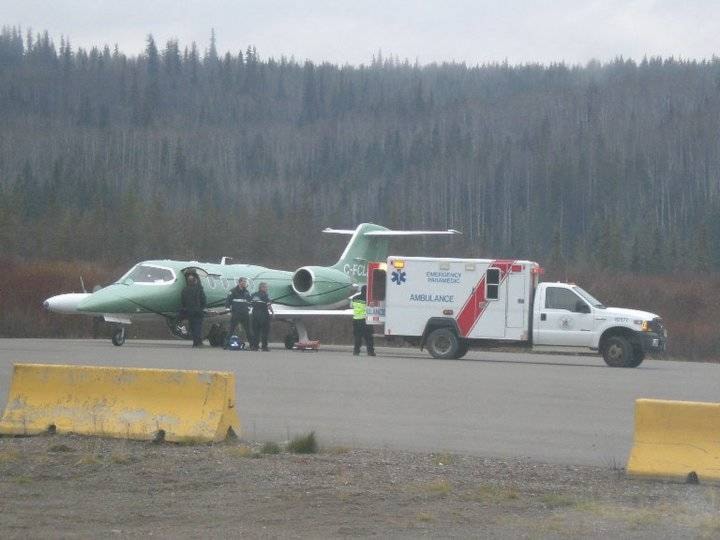District staff and council expect to discuss the future of the Houston airport in the fall - moving ahead with a $4.6 million upgrade or decommissioning it.
The airport’s asphalt surface is expected to significantly deteriorate after 2020 without major repairs.
If council chooses to decommission the airport, air ambulance transfers (medevac) out of Houston would no longer be an option, said Gerald Pinchbeck, Houston’s chief administrative officer.
“It would mean that the airport would not be maintained to the province’s medevac operating standards,” he said.
Although the majority of air ambulance transfers for Houston patients are coordinated out of Smithers, air ambulance transfers out of Houston remain an option, said Sarah Morris, a spokesperson for the BC Emergency Health Services (BCEHS).
The last time a patient was airlifted out of Houston was 2016, said Morris, noting there were two transfers that year.
“The conditions of the Houston airport have not had an impact on BCEHS’s response to patients in Houston,” said Morris, adding the lack of air ambulance responses in Houston since 2016 simply indicates patients were best supported in transfers to a Smithers hospital.
From Smithers, if a higher level of care is required, patients are airlifted to the province’s major trauma centres in Kelowna or Vancouver.
A total of 182 patients were airlifted out of Smithers last year, said Morris.
Pinchbeck said losing medevac services would be of “great concern” to the district as it seeks to advocate for expanded health services.
However, Pinchbeck said the municipality cannot continue spending taxpayers dollars to finance a service “solely meant to provide a backup in the province’s emergency health-care system” while it seeks to resolve an infrastructure deficit.
It’s time to “seriously consider what assets are important to the community” given the district’s long-term financial situation, said Pinchbeck, referring to a smaller tax base compared with communities of similar size, an aging population, and the increasing demand for capital funding to replace aging infrastructure.
The $4.6 million airport upgrade is more than what the district’s roads capital budget has been for the last 10 years combined, said Pinchbeck, and nearly as expensive as the district’s $5.5 million water treatment plant.
“Without sustainable and reliable long-term infrastructure funding from senior governments, the district will need to face the reality of a declining tax base,” said Pinchbeck. “This will mean more conversations over the coming years with residents and council about how to match the desired level of service with our financial realities.”
